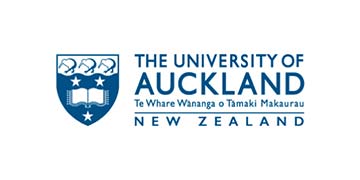University Of Auckland Marine Research Vessel To Aid Hauraki Gulf Rescue Mission
The University’s multi-million-dollar marine research vessel Te Kaihōpara (The Explorer) will join the campaign to revive a troubled and fast-changing Hauraki Gulf.
The 15.9-metre catamaran expands University research capabilities and will support environmental repair work.
“Our marine environment is in need of restoration, especially in the Gulf,” says Professor Simon Thrush, the director of the University’s Institute of Marine Science. “Te Kaihōpara will enhance our teaching and research, and support the wider push to find solutions to our environmental challenges.”
Local iwi Ngāti Manuhiri, a partner in mussel reef restoration, gifted the name Te Kaihōpara.
Funded by the University and a philanthropist, the all-aluminium vessel, capable of carrying 25 people including crew, was officially launched at a function at Auckland’s Maritime Museum on 19 January. The boat replaces the smaller and aged Hawere.
Revive Our Gulf, a collaboration between the University of Auckland, The Nature Conservancy, and the Mussel Reef Restoration Trust is working with Ngāti Manuhiri to try to re-establish mussel beds wiped out by overfishing last century.
The Gulf has become less hospitable for sea creatures because of overfishing and sedimentation. Warming water is leading species to shift locations, disrupting long-established food webs, and encouraging destructive newcomers such as long-spined sea urchins.
Two-spot demoiselles at the Poor Knights.
Two-spot demoiselles at the Poor Knights. Photo: Paul Caiger
The University’s marine research spans climate change, conservation and restoration, whales and dolphins, microplastics, noise pollution, sea birds, seafloor ecology, aquaculture, kelp and kina.
Te Kaihōpara will support projects such as researching:
the resilience of kelp and the effectiveness of large-scale kina removals for restoring kelp forests
how boat noise stresses snapper and, more widely, the role of sound in the Gulf
effects of climate change, such as invasive sea urchins, and new methods for checking the health of the marine environment at scale
feeding groups of whales, dolphins, seabirds and rays
habitat use and interactions of large marine animals
potential for carbon storage in coastal ecosystems
“We now have more capacity to sample the seafloor and deploy increasingly sophisticated equipment and analytical instruments,” says Thrush. “We can also carry many more students and passengers to help training and to experience our marine environment.”
Two big TV screens on the boat aid teaching and research, relaying underwater images captured by video cameras or remotely operated underwater vehicles.
While Te Kaihōpara is capable of travelling the coast of Aotearoa from Manawatāwhi (Three Kings Islands) in the north to as far south as Kaikoura and Greymouth, she will largely be working in the Gulf.
“Te Kaihōpara will spend much of her life working in Ngāti Manuhiri’s rohe moana and we look forward to working with all iwi to enhance the mauri of the Gulf and all marine environments,” says Thrush.
At the launch function, Dean of Science Professor John Hosking and Thrush acknowledged the strong support that former Vice Chancellor Stuart McCutcheon, who died this month, gave to marine science, and thanked the philanthropist who helped fund the new boat.
“As well as supporting research and teaching, this vessel also provides an excellent way for us to get people more engaged and aware of the state of our marine environment and what we can do to improve it,” Thrush said at the function. “Having folk onboard enjoying the beauty of the Gulf – but also aware of the need for radical and meaningful action to ensure its future – is a powerful opportunity.”
Dr Bill Ballantine and colleague J.B. Gilpin-Brown collect plankton in 1965. Photo: New Zealand Woman’s Weekly
The addition of the boat has prompted the Institute to look back on nearly 60 years since the Leigh Marine Laboratory became operational in 1964. Emeritus Professor John Montgomery pulled together photos of previous boats and examples of outstanding research.
In the earliest days, anything bigger than an aluminium dinghy needed to be hired. In 1965, a photo in the New Zealand Woman’s Weekly showed the lab’s first and longest-serving director Dr Bill Ballantine and colleague J.B. Gilpin-Brown bobbing around in a dinghy, collecting plankton.
A dinghy piled high with cables for underwater acoustic experiments in the Leigh Marine Laboratory’s early years
Scientists from the Department of Physics hauled a dinghy, piled high with cables, across the sand in another early shot. The cables would connect underwater microphones to laboratory buildings on the shore for experiments in underwater acoustics led by Professor Alec Kibblewhite.
In an early 1980s shot, capturing one of Te Kaihōpara’s predecessors, RV Proteus, Kibblewhite stands on the back of a ute, apparently delivering some words in connection with the boat, with colleague Dr Bob Creece nearby.
Professor Alec Kibblewhite, on the ute, Dr Bob Creece and one of Te Kaihōpara’s predecessors, RV Proteus, in the early 1980s.
Professor Alec Kibblewhite, on the ute, Dr Bob Creece and one of Te Kaihōpara’s predecessors, RV Proteus, in the early 1980s.
Establishing New Zealand’s first marine reserve, a 6-kilometre no-take strip next to the marine lab at Te Hāwere-a-Maki (Goat Island) in 1975 was a triumph for Bill Ballantine. Intended for scientific research, the reserve became a hit with the public and a model for marine reserves in New Zealand and around the world.
Today, the Gulf’s woes highlight the need for more marine reserves, such as one planned for off Waiheke Island.
Compared to the early years of the marine laboratory, more studies are now connected with environmental degradation, from the millions of plastic particles swallowed by whales each day to the devastating effects of unchecked expansions by kina populations.
Underwater acoustics have been a continuing thread of University marine research down the decades, from investigating the remarkable dawn and dusk choruses of kina to researching the toll that shipping and boating noise is taking on whales and fish.
Te Kaihōpara was built in New Zealand by Q-West Boat Builders Ltd.

